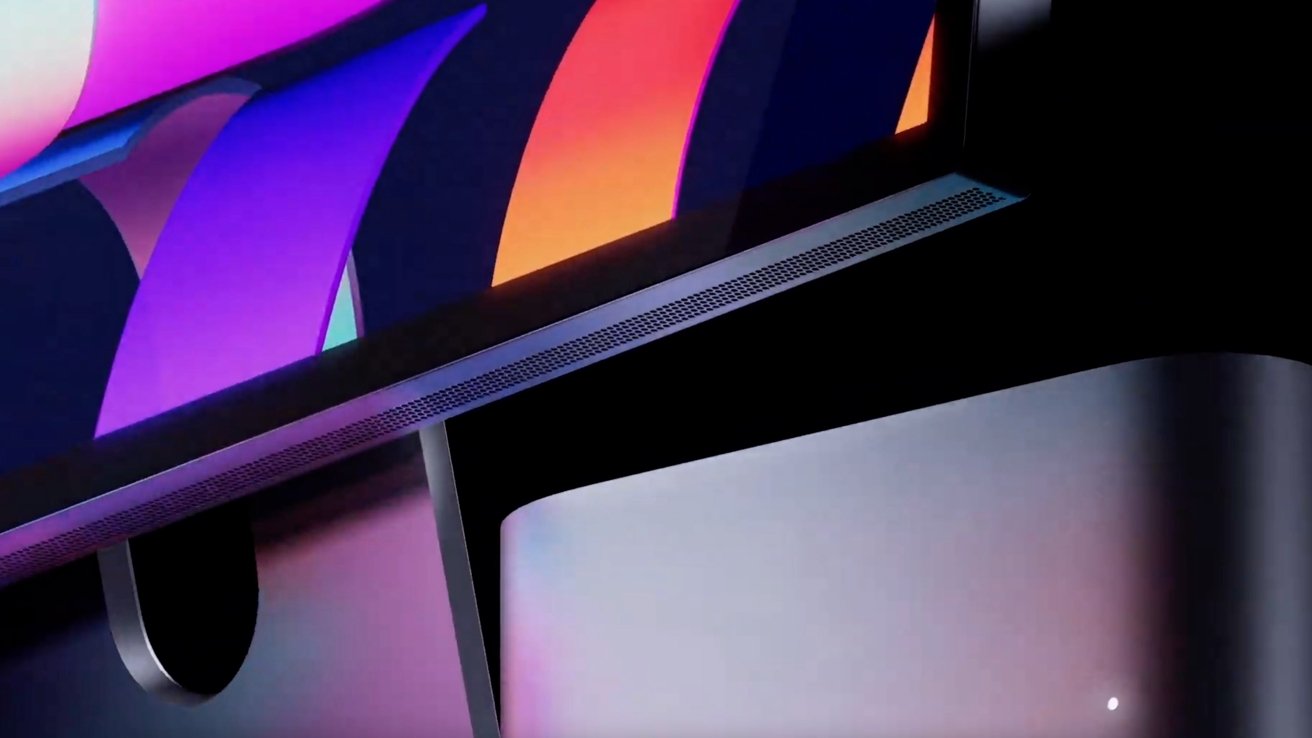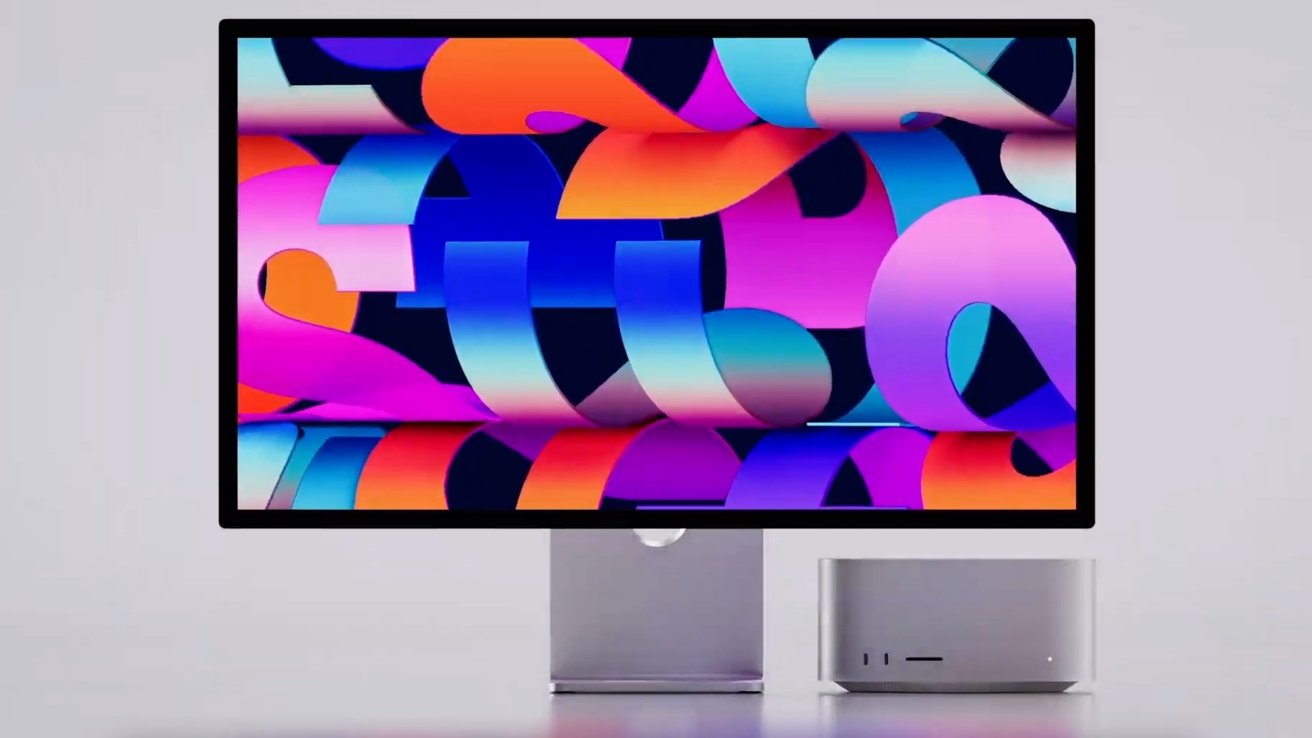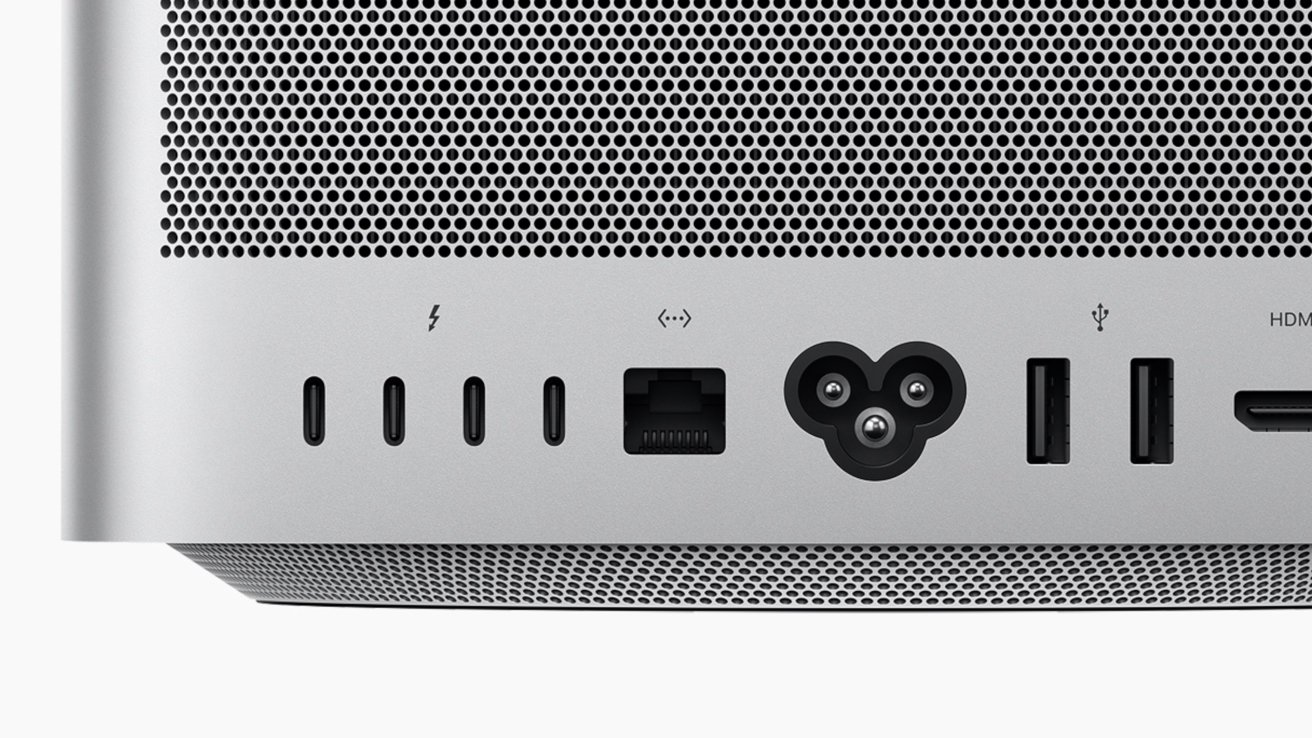How the new Mac Studio fills a crucial gap in Apple's desktop lineup
Apple's Mac Studio slots into an under serviced user-base. Here's how the new computer fills a gap that Apple's had in its product lineup for 15 years.

Mac Studio with the Studio Display
This new headless Mac -- one that lacks a built-in display -- joins an increasingly powerful Mac lineup. Here's why we think it was a necessary addition and why we're so excited about its arrival.
For iPad, Apple offers a wide array of choices with various features and performance. On the low end is the basic iPad, followed by iPad mini, the new iPad Air, then the 11-inch iPad Pro, and the 12.9-inch iPad Pro.
The same goes for the portable Mac lineup with the MacBook Air, entry-level 13-inch MacBook Pro, 14-inch MacBook Pro, and 16-inch MacBook Pro.
If you turn to the desktop lineup, your options are more limited. You have a choice between the Mac mini -- currently only available with the M1 chip or a lone Intel option, the M1-based 24-inch iMac, or the Mac Pro.
There used to be a massive hole in this lineup with a big gap between price points and performance. The hole was more apparent if you look solely at headless Macs with only the $699 Mac mini and $5,999 Mac Pro as the options.

Mac Studio with the Studio Display
Buying a Mac without a built-in display gives users much more control. Rather than being stuck with the built-in panel, users can choose what resolution and refresh rate they want to pay for, what stand to use, what brand, what finish, or fulfill any color calibration requirements they may have.
This also helps long-term. Should you upgrade your Mac or should the Mac keel over, the Mac can be replaced independently of the display. The converse also holds true should the display break or warrant an upgrade.
There's certainly a case to be made for Apple to add a new 27-inch iMac to its lineup, but it wouldn't have met the need of many users that the Mac Studio caters to.
And, it's not clear if that form-factor is ever returning. We'll see.
A Mac Studio can be purchased for $1,999 with a capable M1 Max SoC, or you can jump up to $3,999 for an M1 Ultra.

Mac Studio ports
For ports, Apple is not shorting users. The new model brings 10Gb Ethernet for wired connectivity, and two USB-A ports. While the M1 Max version has four Thunderbolt and front-mounted USB 3.2 type-C ports, the M1 Ultra version has six Thunderbolt ports.
Like we've said before, this isn't the mythical minitower that the devout have been clamoring for, for over 20 years. It doesn't have PCI-E, nor vast user expandability.
It's not far from that ideal, though, and offers blistering performance in a small package.

Mac Studio with the Studio Display
This new headless Mac -- one that lacks a built-in display -- joins an increasingly powerful Mac lineup. Here's why we think it was a necessary addition and why we're so excited about its arrival.
A hole in Apple's lineup
Apple has had a glaring hole in its Mac lineup for some time now that lacks the granularity as Apple's other product lines.For iPad, Apple offers a wide array of choices with various features and performance. On the low end is the basic iPad, followed by iPad mini, the new iPad Air, then the 11-inch iPad Pro, and the 12.9-inch iPad Pro.
The same goes for the portable Mac lineup with the MacBook Air, entry-level 13-inch MacBook Pro, 14-inch MacBook Pro, and 16-inch MacBook Pro.
If you turn to the desktop lineup, your options are more limited. You have a choice between the Mac mini -- currently only available with the M1 chip or a lone Intel option, the M1-based 24-inch iMac, or the Mac Pro.
There used to be a massive hole in this lineup with a big gap between price points and performance. The hole was more apparent if you look solely at headless Macs with only the $699 Mac mini and $5,999 Mac Pro as the options.

Mac Studio with the Studio Display
Buying a Mac without a built-in display gives users much more control. Rather than being stuck with the built-in panel, users can choose what resolution and refresh rate they want to pay for, what stand to use, what brand, what finish, or fulfill any color calibration requirements they may have.
This also helps long-term. Should you upgrade your Mac or should the Mac keel over, the Mac can be replaced independently of the display. The converse also holds true should the display break or warrant an upgrade.
There's certainly a case to be made for Apple to add a new 27-inch iMac to its lineup, but it wouldn't have met the need of many users that the Mac Studio caters to.
And, it's not clear if that form-factor is ever returning. We'll see.
Performance, ports, and price
The Mac Pro comes to market with a healthy array of ports, performance, and price.A Mac Studio can be purchased for $1,999 with a capable M1 Max SoC, or you can jump up to $3,999 for an M1 Ultra.

Mac Studio ports
For ports, Apple is not shorting users. The new model brings 10Gb Ethernet for wired connectivity, and two USB-A ports. While the M1 Max version has four Thunderbolt and front-mounted USB 3.2 type-C ports, the M1 Ultra version has six Thunderbolt ports.
Like we've said before, this isn't the mythical minitower that the devout have been clamoring for, for over 20 years. It doesn't have PCI-E, nor vast user expandability.
It's not far from that ideal, though, and offers blistering performance in a small package.
Where to buy
Apple's new Mac Studio is available for purchase at a variety of Apple resellers, with a starting price tag of $1,999. You can compare the latest prices and deals in our Mac Studio Price Guide or jump to one of these popular resellers.- Buy at Adorama
- Buy at B&H
- Buy at Best Buy
- Buy at Expercom
- Coming soon at Amazon




Comments
Ok there’s some (no evidence for many) that want something like the Mac Studio and its component style. But the history of strong sales of the integrated 27” iMac makes a strong case for a demand for a M1 27” iMac and probably a higher demand than for Mac Studio. The business market was a strong buyer of 27” iMacs for its appearance and easy upkeep and no cables. Apple writers seem to be ignorant of business when they make statements such as the foregoing one.
I would very much like to see M1 Pro-based Mac mini models with starting prices of, say, $1299 and $1499 (or $1399 and $1599 — whatever Apple needs to do to make its traditionally high margins without gouging us too much). That gap from consumer-grade Mac mini to the pro-grade Mac Studio is a canyon that needs filling.
Doesn’t Thunderbolt does offer vast user expandability?
There's still a big hole in Apple's lineup, but it's now a different hole.
We have a small fleet of 27" 5K iMacs used as graphic design workstations. Each of these cost in total about $3 grand plus/minus, configured with either 32GB or 40GB RAM and a 512GB SSD. Replacing any of these with a 32GB/512GB Mac Studio Max, a Studio Display, plus keyboard and mouse, will now run about $4 grand. Yes, performance would be substantially improved, however because for 2D graphics work (mostly Adobe CC apps) we're really not performance constrained, there would be no payback from the faster, but much more expensive Studio Max. (Note that the M1 Mac Mini isn't an option due to its 16GB RAM limitation.)
We also have an iMac Pro 10-core Xeon W with 64GB/1TB for which we paid about $7500 in 2019. It's used for video editing. If I had to replace this with a 64GB/1TB Mac Studio Ultra and Studio Display, plus keyboard and mouse, it would come in at under $6 grand. So in this case I'd be paying way less and getting substantially higher performance for video tasks that will benefit from that.
And finally, I suspect Apple recognizes that there are some customers who are much more important than others, not only because they buy a lot of Apple products, but because they evangelize Apple products to others (and support other Apple users). Those are the 'pro' users, and at the tippy top of that group are the Mac Pro users. I think this explains why there's still a Mac Pro. The corollary to losing these folks is that they then become anti-evangelists who discourage others from buying Apple products.
So bottom line -- I think Apple management is now pretty darned smart about this stuff, much more so than at some times in the past.
Don’t get me wrong, the studio is. An amazing piece of tech. If I were to buy one, I would bolt it under my desk.